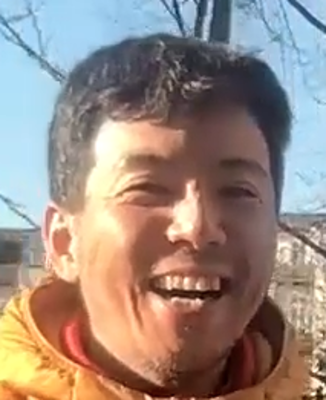-
When philosophical nuance matters: safeguarding consciousness research from restrictive assumptionsFrontiers in Psychology 14. 2023.In this paper, we revisit the debate surrounding the Unfolding Argument (UA) against causal structure theories of consciousness (as well as the hard-criteria research program it prescribes), using it as a platform for discussing theoretical and methodological issues in consciousness research. Causal structure theories assert that consciousness depends on a particular causal structure of the brain. Our claim is that some of the assumptions fueling the UA are not warranted, and therefore we should…Read more
-
6When mind and body align: examining the role of cross-modal congruency in conscious representations of happy facial expressionsCognition and Emotion 38 (2): 267-275. 2024.This study explored how congruency between facial mimicry and observed expressions affects the stability of conscious facial expression representations. Focusing on the congruency effect between proprioceptive/sensorimotor signals and visual stimuli for happy expressions, participants underwent a binocular rivalry task displaying neutral and happy faces. Mimicry was either facilitated with a chopstick or left unrestricted. Key metrics included Initial Percept (bias indicator), Onset Resolution T…Read more
-
Growing Evidence for Separate Neural Mechanisms for Attention and ConsciousnessAttention, Perception, and Psychophysics 83 558-576. 2021.
-
48Continuous flash suppression reduces negative afterimagesNature Neuroscience 8 (8): 1096-1101. 2005.Illusions that produce perceptual suppression despite constant retinal input are used to manipulate visual consciousness. Here we report on a powerful variant of existing techniques, Continuous Flash Suppression. Distinct images flashed successively around 10 Hz into one eye reliably suppress an image presented to the other eye. Compared to binocular rivalry, the duration of perceptual suppression increased more than 10-fold. Using this tool we show that the strength of the negative afterimage o…Read more
-
1890Emotion and consciousnessTrends in Cognitive Sciences 11 (4): 158-167. 2007.Consciousness and emotion feature prominently in our personal lives, yet remain enigmatic. Recent advances prompt further distinctions that should provide more experimental traction: we argue that emotion consists of an emotion state (functional aspects, including emo- tional response) as well as feelings (the conscious experience of the emotion), and that consciousness consists of level (e.g. coma, vegetative state and wake- fulness) and content (what it is we are conscious of). Not only is con…Read more
-
1352Attention and consciousness: Related yet differentTrends in Cognitive Sciences 16 (2): 103-105. 2012.
-
88Phenomenology Without Conscious Access is A Form of Consciousness Without Top-down AttentionBehavioral and Brain Sciences 30 (5-6): 509-510. 2007.We agree with Block's basic hypothesis postulating the existence of phenomenal consciousness without cognitive access. We explain such states in terms of consciousness without top-down, endogenous attention and speculate that their correlates may be a coalition of neurons that are consigned to the back of cortex, without access to working memory and planning in frontal cortex
-
730Response to Mole: Subjects can attend to completely invisible objectsTrends in Cognitive Sciences 12 (2): 44-45. 2008.
-
132Attention and consciousness: two distinct brain processesTrends in Cognitive Sciences 11 (1): 16-22. 2007.
-
296When do parts form wholes? Integrated information as the restriction on mereological compositionNeuroscience of Consciousness. forthcoming.Under what conditions are material objects, such as particles, parts of a whole object? This is the composition question and is a longstanding open question in philosophy. Existing attempts to specify a non-trivial restriction on composition tend to be vague and face serious counterexamples. Consequently, two extreme answers have become mainstream: composition (the forming of a whole by its parts) happens under no or all conditions. In this paper, we provide a self-contained introduction to the …Read more
-
15A Quantum Geometric Framework for Modeling Color Similarity JudgmentsCognitive Science 47 (1). 2023.Since Tversky argued that similarity judgments violate the three metric axioms, asymmetrical similarity judgments have been particularly challenging for standard, geometric models of similarity, such as multidimensional scaling. According to Tversky, asymmetrical similarity judgments are driven by differences in salience or extent of knowledge. However, the notion of salience has been difficult to operationalize, especially for perceptual stimuli for which there are no apparent differences in ex…Read more
-
25Enriched category as a model of qualia structure based on similarity judgementsConsciousness and Cognition 101 (C): 103319. 2022.
-
15Conscious perception of flickering stimuli in binocular rivalry and continuous flash suppression is not affected by tACS-induced SSR modulationConsciousness and Cognition 82 102953. 2020.
-
22Metacognitive Accuracy Improves With the Perceptual Learning of a Low- but Not High-Level Face PropertyFrontiers in Psychology 10. 2019.
-
1136Top-down attention and consciousness: comment on Cohen et alTrends in Cognitive Sciences 16 (11): 527. 2012.
-
67Can the free energy principle be used to generate a theory of consciousness?Frontiers in Human Neuroscience 9. 2015.
-
45Integrated information and free energy - obstacles to their combinationFrontiers in Human Neuroscience 9. 2015.
-
1166“What is it like to be a bat?”—a pathway to the answer from the integrated information theoryPhilosophy Compass 12 (3). 2017.What does it feel like to be a bat? Is conscious experience of echolocation closer to that of vision or audition? Or do bats process echolocation nonconsciously, such that they do not feel anything about echolocation? This famous question of bats' experience, posed by a philosopher Thomas Nagel in 1974, clarifies the difficult nature of the mind–body problem. Why a particular sense, such as vision, has to feel like vision, but not like audition, is totally puzzling. This is especially so given t…Read more
-
345Introduction to Research Topic – Binocular Rivalry: A Gateway to Studying ConsciousnessFrontiers in Human Neuroscience 6. 2012.
-
3Featural, but not spatial, attention modulates unconscious processing of visual stimuliIn Robert Schwartz (ed.), Perception, Blackwell. pp. 8-8. 2004.
-
22Introduction to research topic: attention and consciousness in different sensesFrontiers in Psychology 4. 2013.
-
The Scope and Limits of Top-Down Attention in Unconscious Visual Processing.Current Biology 16 (23). 2006.
-
17Psyche, attention and consciousnessPSYCHE: An Interdisciplinary Journal of Research On Consciousness 14. 2008.
-
Monash UniversityRegular Faculty
Areas of Specialization
| Science, Logic, and Mathematics |
Areas of Interest
| Science, Logic, and Mathematics |
| Philosophy of Consciousness |
